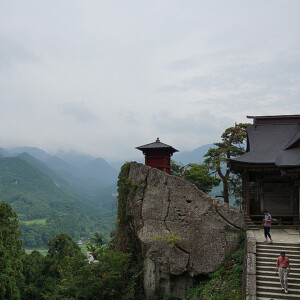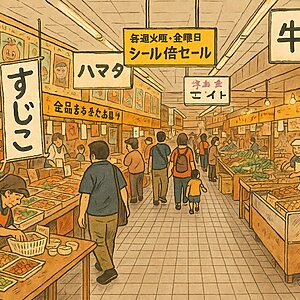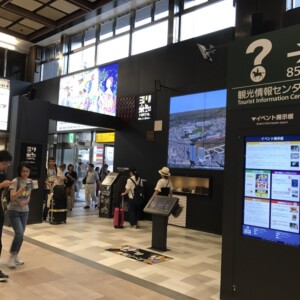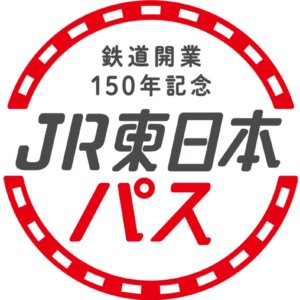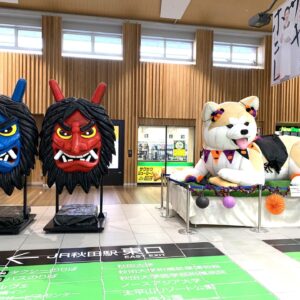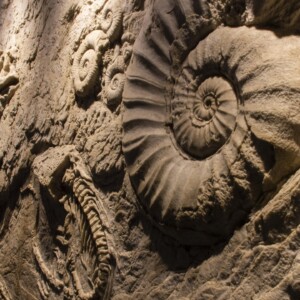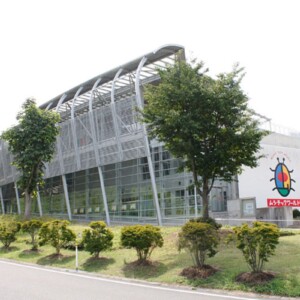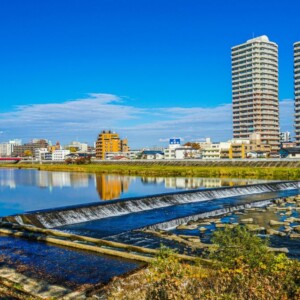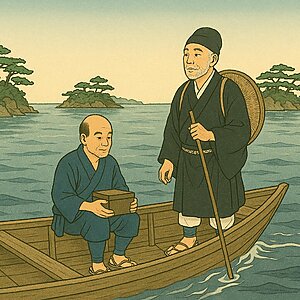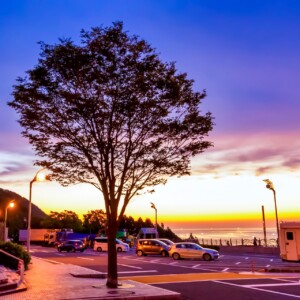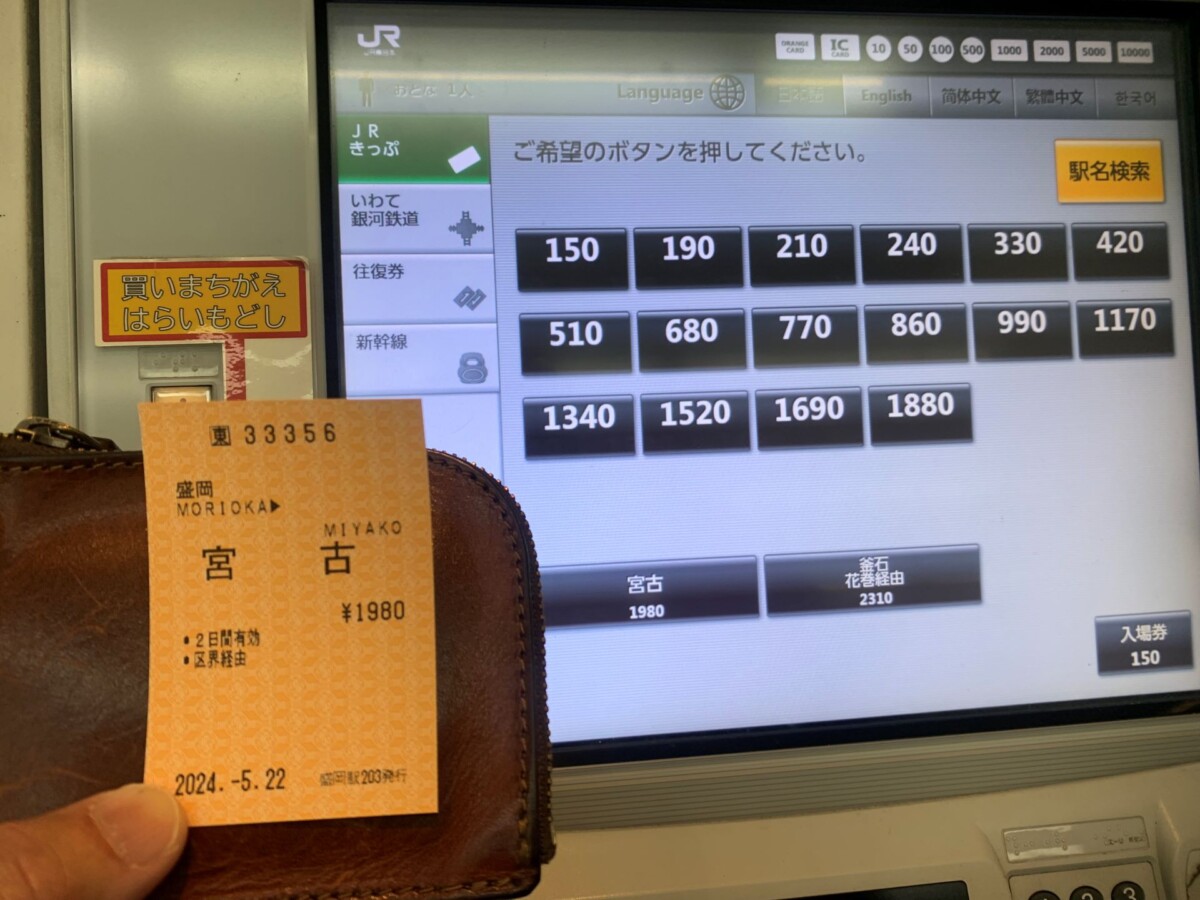
[Iwate Prefecture] I participated in a demonstration experiment that allows you to ride the Yamada Line and 106 Express and Express Buses with a JR ticket!
table of contents
the JR Yamada Line, which connects Morioka and Miyako, and "106 (Hyakuroku) Limited Express/Express" is being conducted for one year from April 1, 2024 to March 31, 2025.
I decided to take both buses to find out what the significance of this experiment, which allows passengers to use JR tickets to ride on private bus routes, is
What is the demonstration experiment for the coexistence of trains and buses?
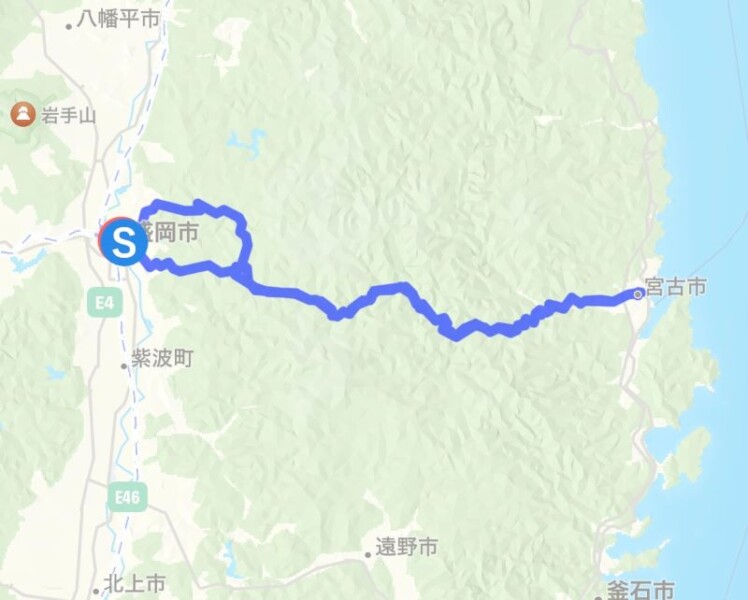
This experiment allows passengers with a valid JR ticket between Morioka and Miyako (commuter passes and coupon tickets are accepted, excluding discount tickets such as Seishun 18 Kippu) to ride the 106 Limited Express/Express Bus on the same route
The fare structure for each will remain the same, with the bus fare being 2,000 to 2,200 yen compared to 1,980 yen for a JR ticket, resulting in a savings of up to 220 yen (as of May 24, 2024)
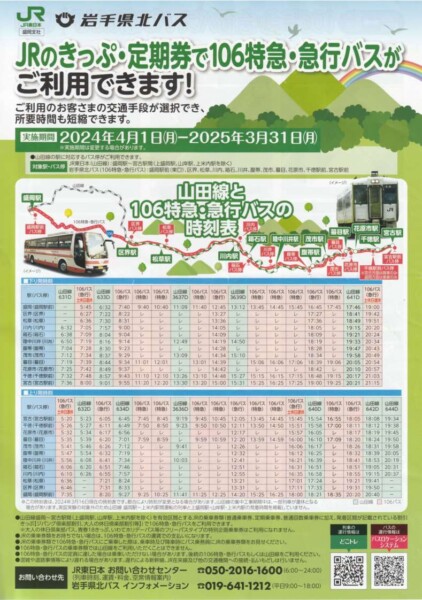
Furthermore, the driving distance between Morioka and Miyako is over 101km, so while JR train tickets allow you to get off at any stop along the way, you can also get off the bus at any stop along the way (however, you cannot get off at bus stops between Morioka and Kuzakai
Also, bus tickets cannot be used to board JR trains, and bus route fares will apply if you board a bus along the way
First, take the JR Yamada Line from Morioka to Miyako!
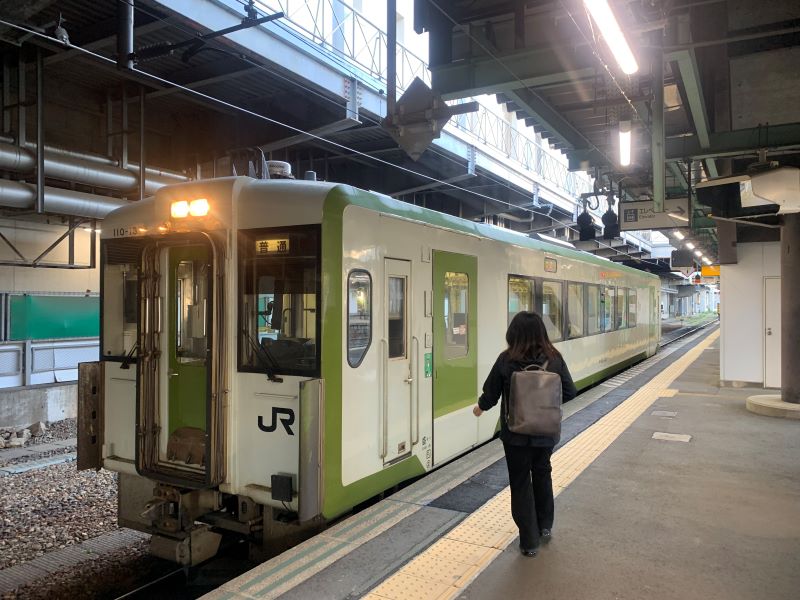
It was early in the morning and there were few people around, so I boarded the 6:32am train to Miyako from platform 2 at Morioka Station
The restaurants in the station were closed and the New Days inside the station doesn't open until 6:30, so I got breakfast at the convenience store in front of the station, but I wish it was open from 6:00 like the Family Mart in Menkoi Yokocho underground the station
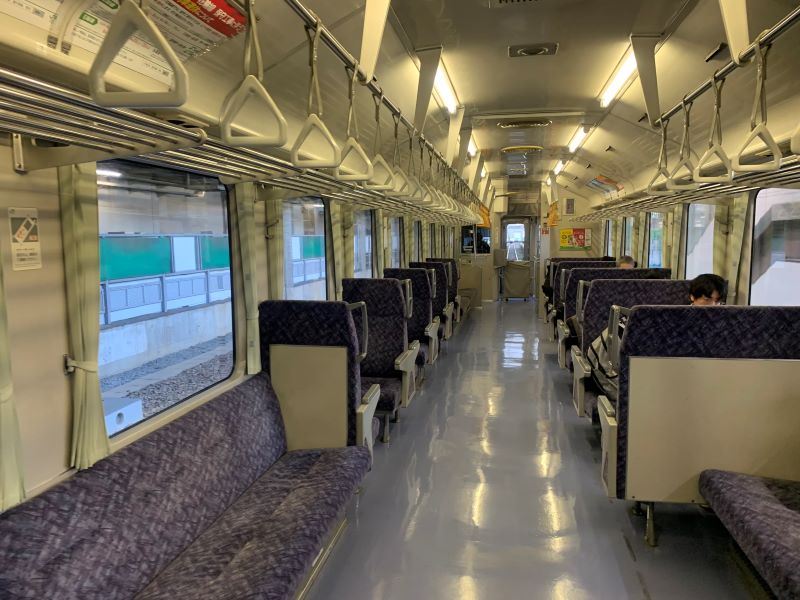
Inside the Kiha 110 series train: box seats for four and two, with a toilet at the rear
Morioka - Kamimorioka - Yamagishi - Kamiyonai
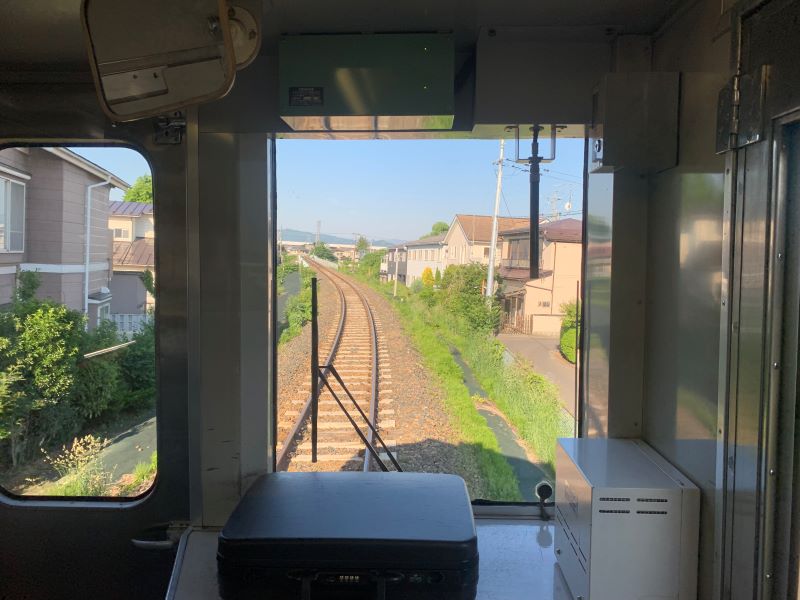
The diesel train that departs Morioka Station runs through residential areas on a different route from National Route 106. It stops at these unmanned stations, but there are very few passengers. At later times, there are commuter and school trains that run only on this section
Although the train is made up of one car, it is not operated by a single driver; in addition to the driver, there is a conductor on board, and the conductor will ask passengers on board the train about their destination and sell them tickets
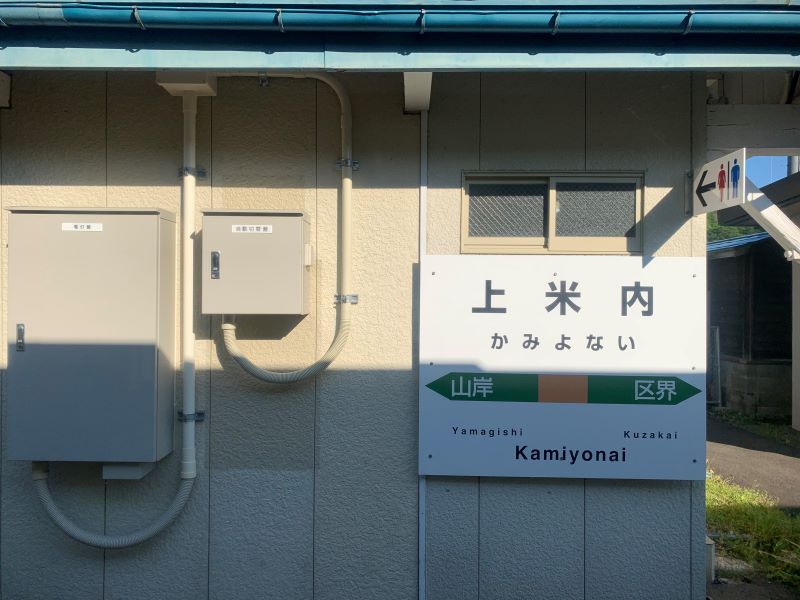
From Yamagishi Station onwards, the number of houses gradually decreases and the countryside unfolds along the Yonai River, before you arrive at Kamiyonai Station
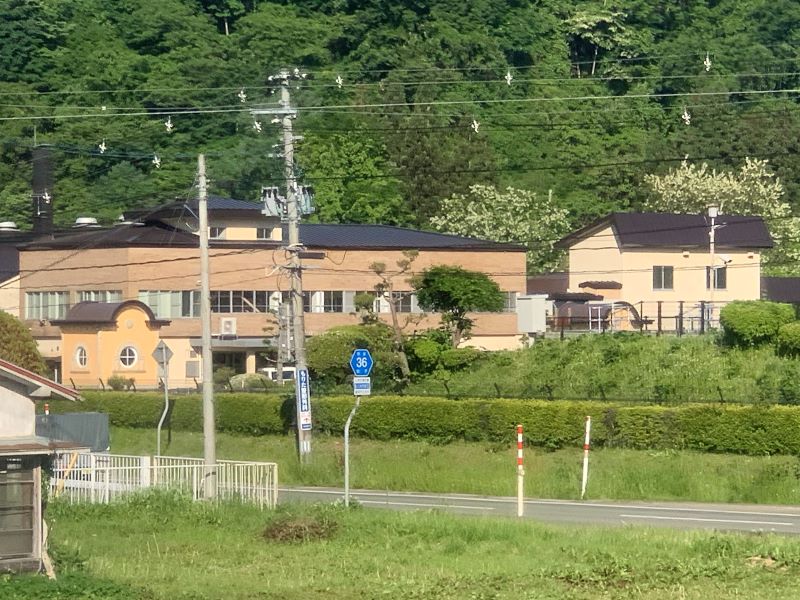
Near Kamiyonnai Station is the Yonai Water Purification Plant, the oldest in Morioka City. The plant was completed in 1934 (Showa 9), and the cherry blossom viewing spots, with a plethora of weeping cherry trees in full bloom.
Kamimai-ku boundary
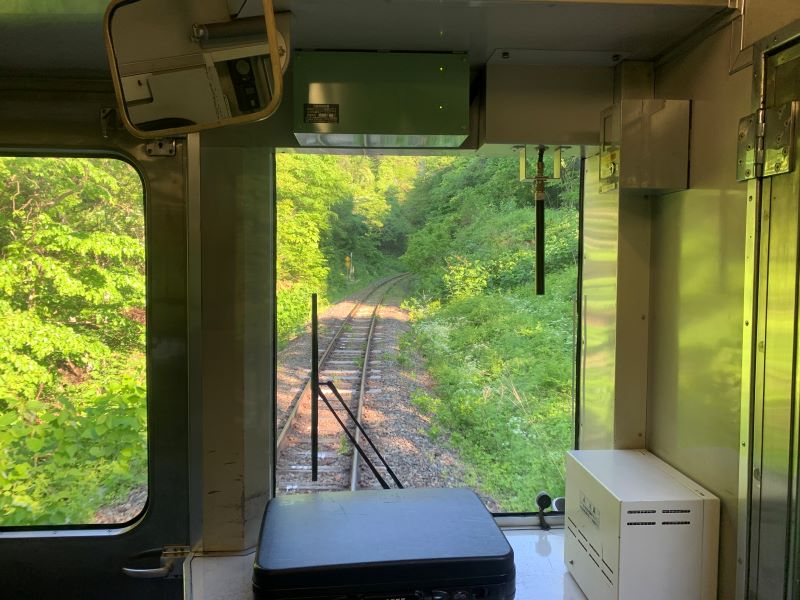
Oshida Station and Asagishi Station between these two stations , but due to the mountainous area, they were closed due to a decrease in passenger numbers. As a result, this section is now the longest distance between stations within the jurisdiction of JR East, at 25.7 km , and trains continue to run through the mountains.
This section of the Yamada Line has the highest number of accidents involving wild animals
Ward boundary - Matsukusa - Kawauchi
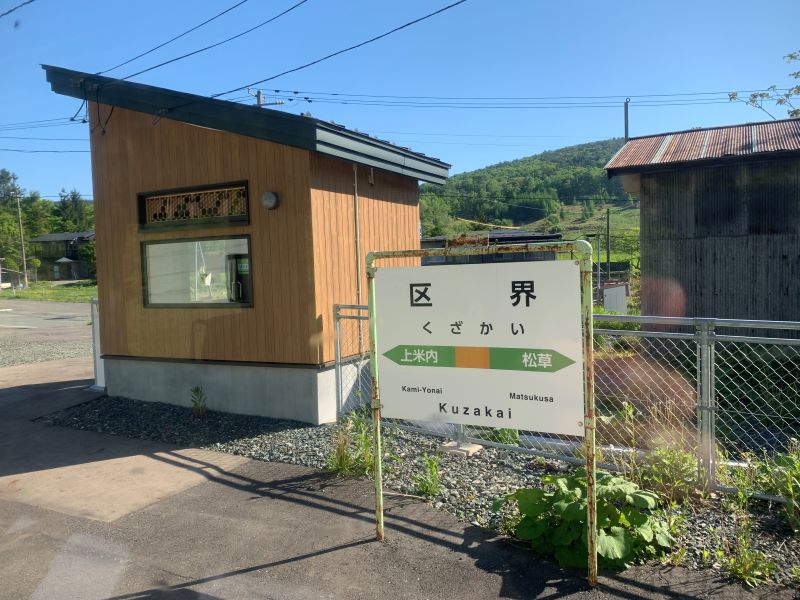
The area around Kukei Station, where Morioka City crosses into Miyako City, is at an altitude of 744m, the highest point in the Tohoku region, and it is here that the line begins to run parallel to National Route 106. The section between Kukei and Miyako is a joint service with the 106 Limited Express and Express Bus , and there are bus stops near each station where you can transfer.
Between Matsukusa Station and Kawauchi Station Hiratsuto Station, famous as a "hidden station," but it was closed on March 17, 2023.
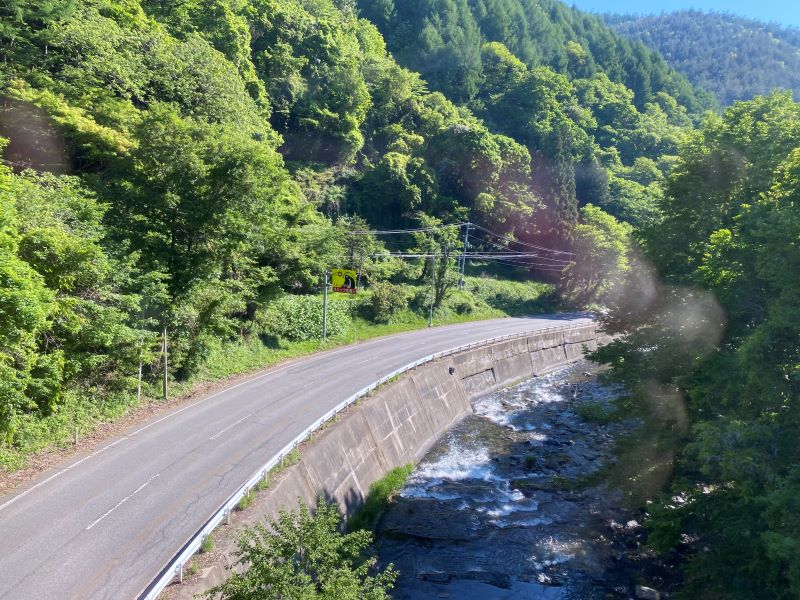
The Heigawa River, which flows into the Pacific Ocean in Miyako City , also joins them as they head east, crossing each other like braided pigtails.
Kawauchi - Hakoishi - Rikuchukawai - Haratai - Moichi
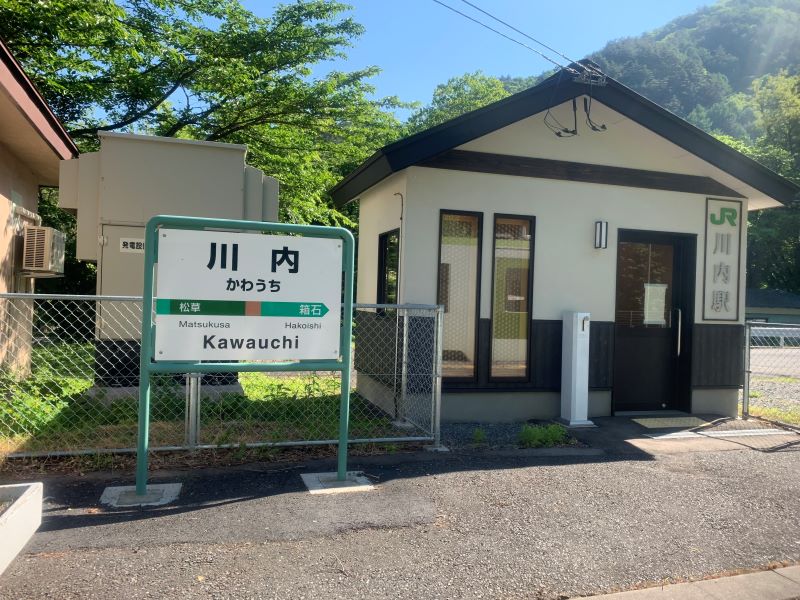
The Yamada Line crosses the national highway up to Haraobi and runs mostly along the right bank (south side) of the Iwai River, allowing you to see famous spots on the Iwai River such as the 48 Kama
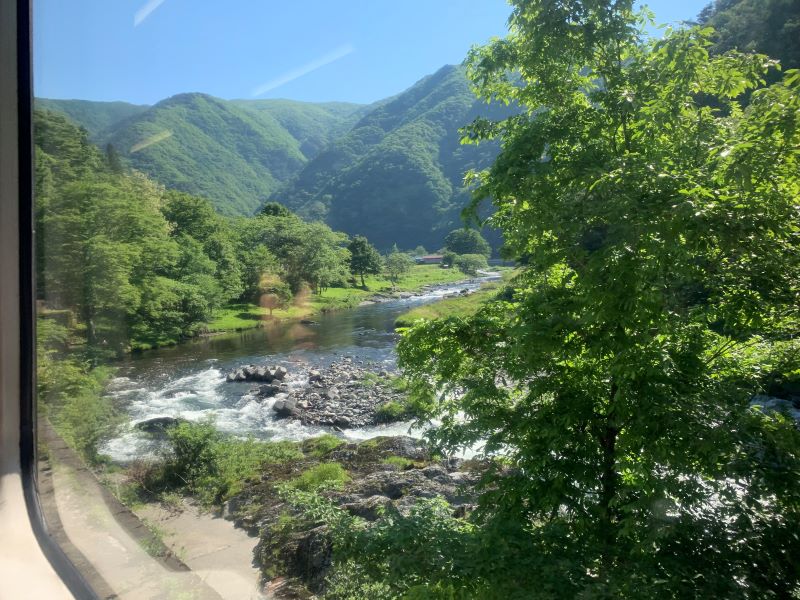
Just before Haraobi, the train crosses the left bank of the Hei River and arrives at Moichi Station, the starting station of known as the "eastern champion of local
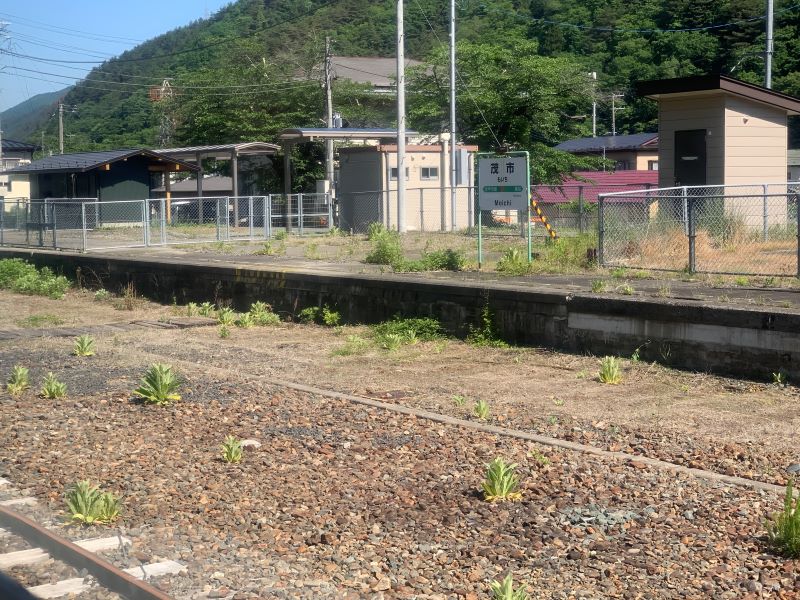
The Iwaizumi Line was closed due to a landslide that occurred on July 31, 2010, and was abolished on April 1, 2014, handing over its title as the "Yokozuna of the East" to the Yamada Line, but traces of its existence can still be seen at Moichi Station
Moichi - Hikime - Kebaraichi - Sentoku - Miyako
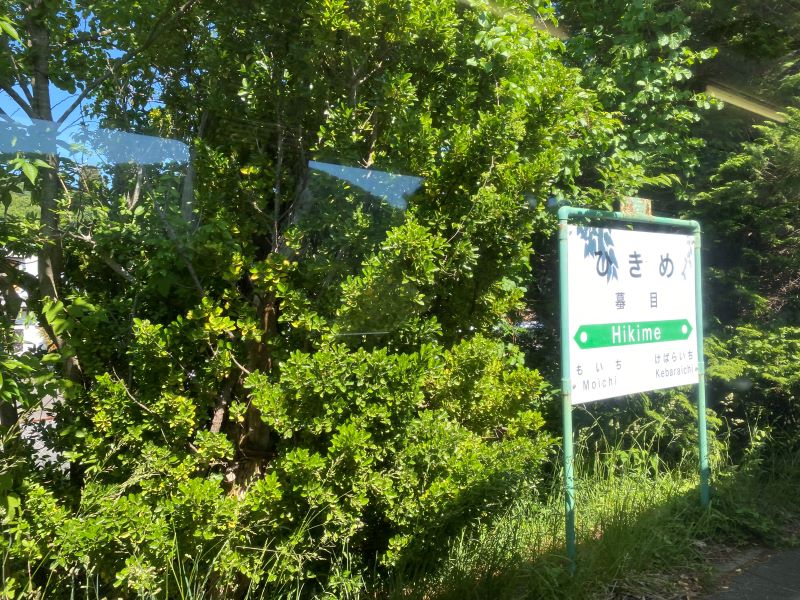
From Moriichi, the Yamada Line and National Route 106 run side by side along the left bank of the Hei River from around Kameme to Miyako. Eventually, you will see the new Miyako City Hall building ahead, which was damaged in the tsunami caused by the Great East Japan Earthquake and relocated from the coast, and you will have arrived at Miyako Station
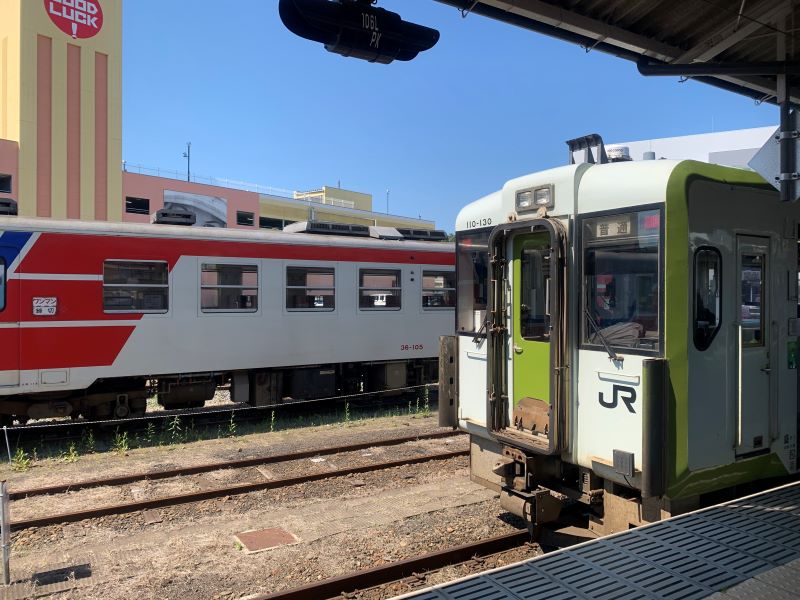
Inside Miyako Station, JR's 110 series and Sanriku Railway's 36 series trains lined up side by side to welcome us.
On the way back, take the 106 express bus to Morioka!

You can purchase a ticket to Morioka at the JR Midori counter at Miyako Station, and then board the 106 Limited Express/Express bus bound for Morioka Station East Exit from bus stop number 6 in front of the Iwate Kenhoku Bus Miyako Station Information Center
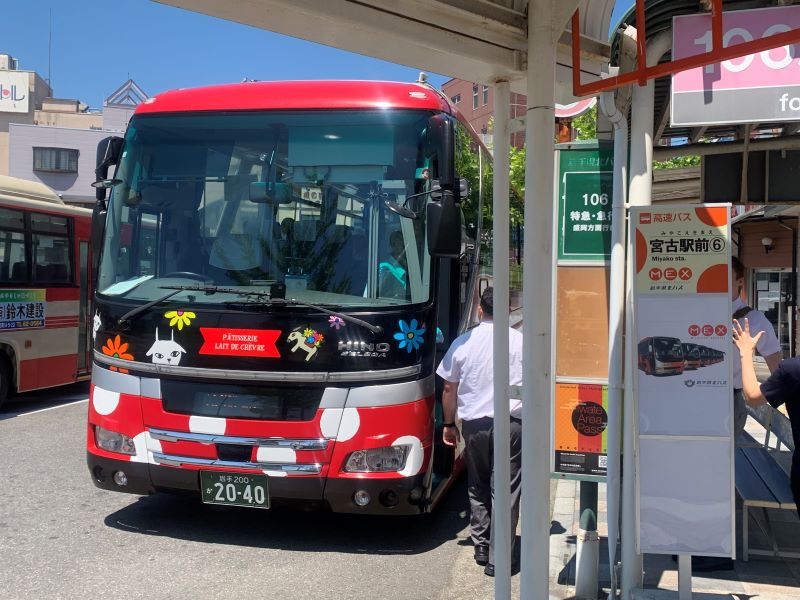
There is also a bus that departs from Funakoshi Station in Yamada Town, but with a JR ticket you can only board from Miyako Station . The express train takes about 1 hour 40 minutes to Morioka, but this time I took the express train, which takes about the same time as the JR train (about 2 hours 15 minutes).
Although it is an intercity bus, it is used like a regular route bus within Miyako City, and has a high passenger load even during the day on weekdays

Please note that this article only lists bus stops where you can board and disembark using a JR ticket
Miyako Station - Sentoku Station - Hanahara City - Kameme - Shige City

Both bus stops are located near JR stations of the same name, and are bus and train transfer points

Sentoku Station , the Hei River appears on your left and you continue west along the river. However, since you are closer to the river than the railway, you can enjoy a different view of the Hei River.

At the Moichi bus stop, several passengers got off, presumably to transfer to a bus heading towards Iwaizumi
Moichi ~ Haraobi ~ Kawai ~ Hakoishi ~ Kawauchi ~ (Yamabiko Direct Sales Center)
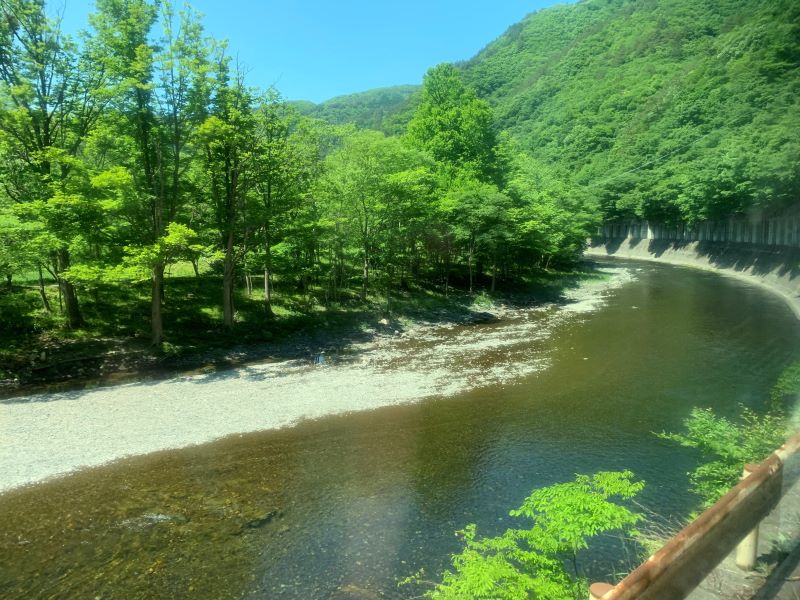
As you sway on the bus, watching the Hei River glimpse through the windows, the bus stops for a toilet break at "Yamabiko Sanchokukan"
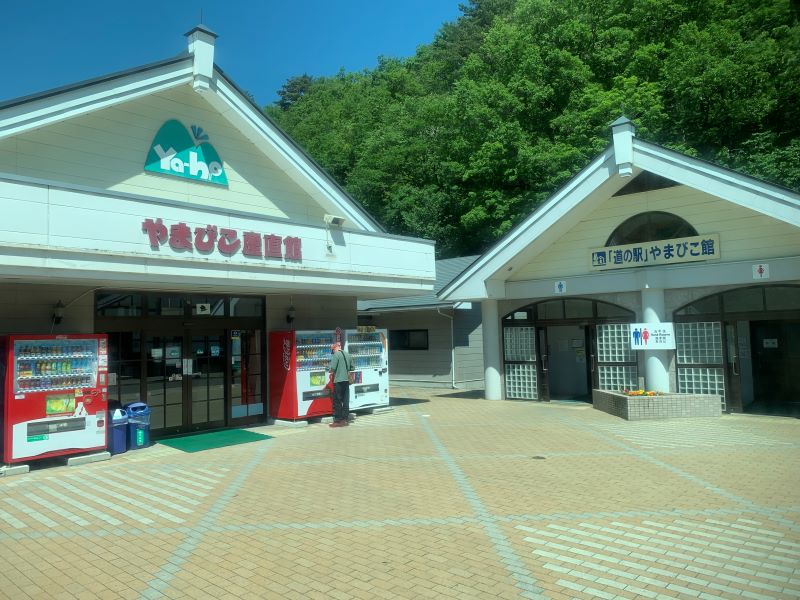
However, the stop time was only three minutes, and the only passengers who got out were those buying drinks from vending machines
There is also a bus stop at Yamabiko Sanchokukan, but you cannot get on or off the bus with a JR ticket
(Yamabiko Direct Sales Center) ~ Matsukusa ~ Kukai ~ Morioka Station
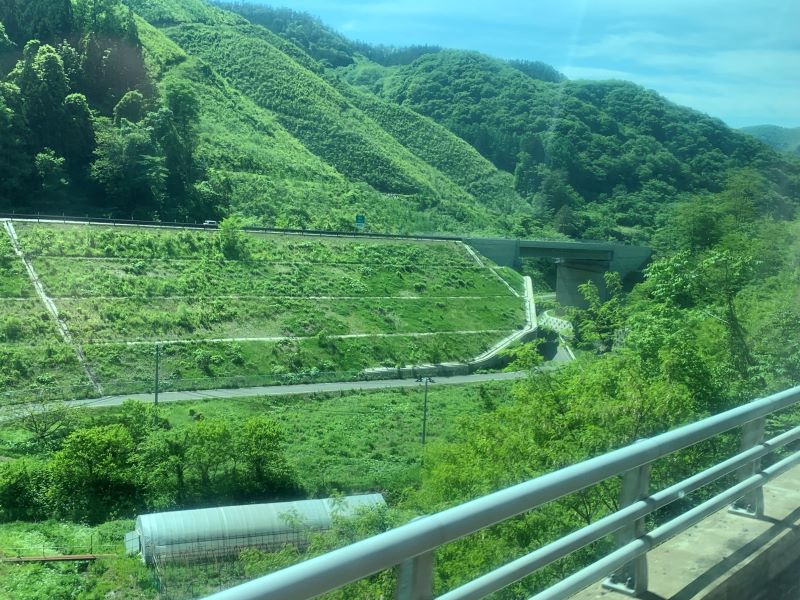
After leaving Sanchokukan, the bus continues along the left bank of the Hei River, passing several bus stops before stopping at Matsukusa and Kukai
Kukai Pass on National Route 106 is a difficult spot where many traffic accidents occur and where snow and frozen roads are common in winter. With the completion of the new Kukai Tunnel, it is now possible to pass through it more easily and in a shorter time, but the 106 Express continues to travel along the old pass road to Morioka city
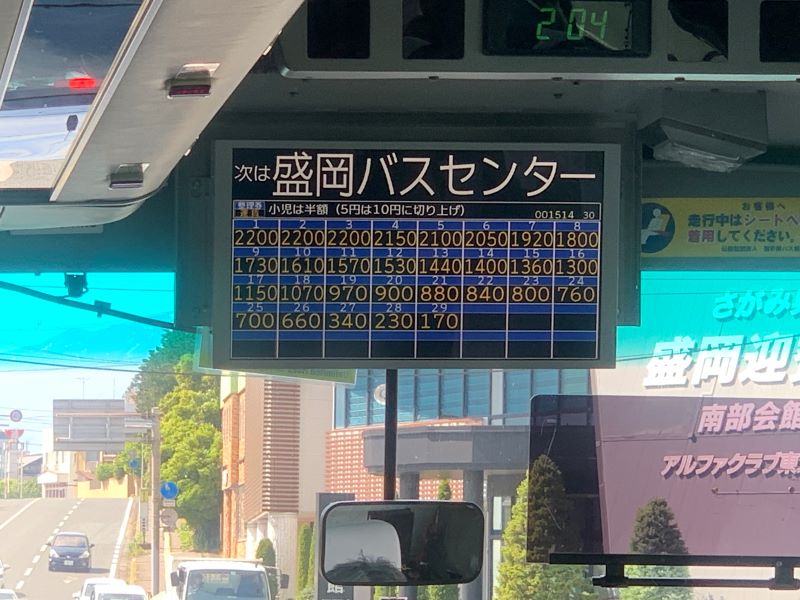
Yanagawa Dam which was completed in 2021 , and then followed the Yanagawa River into Morioka city, arriving at our final destination, bus stop number 7 at the Morioka Station East Exit Bus Terminal, right on schedule.
I thought about the demonstration experiment
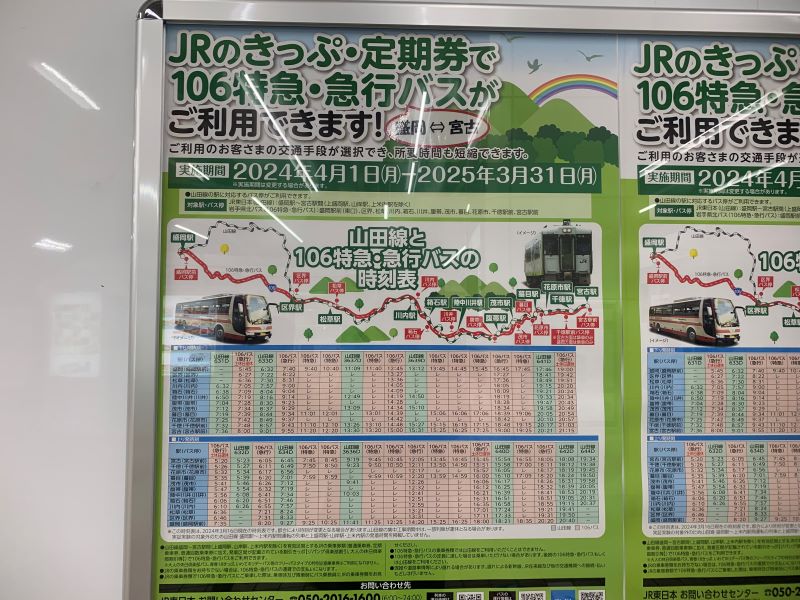
This time, I took the Yamada Line from Morioka to Miyako, and then the 106 express bus from Miyako for a day trip. However, on the day I took the bus, there was only one morning bus to Morioka from Miyako Station on the Yamada Line, and without this experiment, it would have been impossible to make the day trip using a JR ticket
By combining both schedules, the number of trains has effectively increased, which can be said to have improved convenience
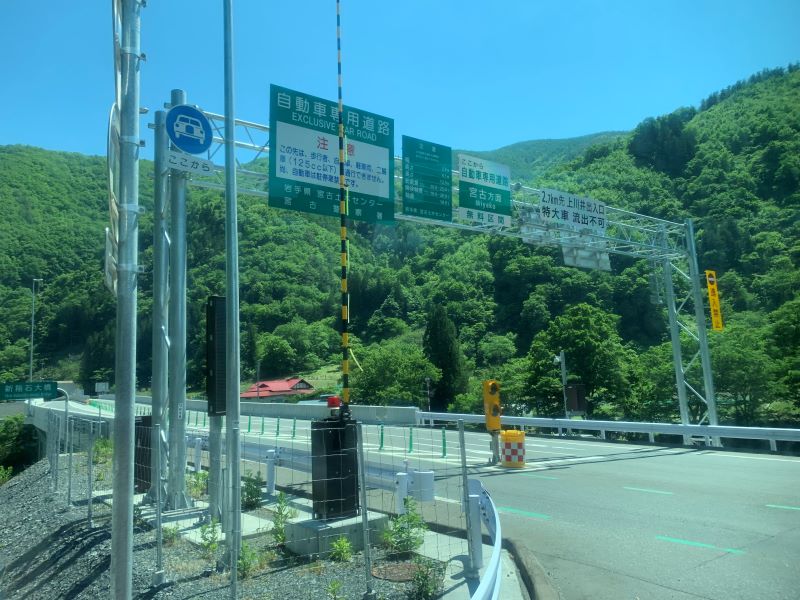
Another benefit is that the 106 express bus, which uses the Miyako-Morioka Crossing Road, can reduce the travel time by 40 minutes one way, and the JR ticket is cheaper than the bus, allowing you to shorten your travel time
However, there are few tourist spots in areas where it is possible to get off the bus along the way, so while it may be convenient for local residents as a daily route, there may be little benefit to using it for sightseeing
Information
- JR East Official Website
- JR East News (Regarding the implementation of a demonstration experiment aimed at improving convenience on the Yamada Line)
- Iwate Kenhoku Bus Official Website
- Regarding boarding and disembarking the 106 express and express buses using JR Yamada Line tickets (Iwate Kenhoku Bus official website)
summary
Having actually ridden both, I found that the train seats are spacious, allowing me to move around inside the car, go to the toilet, and move around even on long rides. On the bus, although the seats are a little narrow, the travel time between Morioka and Miyako is short and there are many services, so it's hard to choose between them both
It is not yet clear what results will come from this pilot project, which aims to promote the use of public transportation by allowing passengers to transfer between trains and buses that run roughly the same routes
However, the Yamada Line, which is a "highly unprofitable line" for JR East, is likely to be closed if things continue as they are, and it is said that this experiment was carried out in response to growing calls to prevent the closure of this valuable line, which offers visitors the secluded scenery of mountains and rivers
I sincerely hope that this experiment will lead to some positive results and that the Yamada Line will be able to continue as a loss-making local line that can coexist with regular bus services


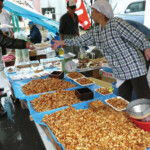
![7 long-established cafes in Morioka City! Let's spend time surrounded by the Showa era scent [Iwate Prefecture] coffee shop](https://jp.neft.asia/wp-content/uploads/2023/06/61d856417cd218fa82cebfde67f83a2d-150x150.jpg)

![[Tono, Iwate Prefecture] “Tono Monogatari no Yakata” allows you to experience old tales for yourself! Let's explore the hometown of monsters on a rental bicycle 205+Tono City_Toono Story House⑤_(Winter)](https://jp.neft.asia/wp-content/uploads/2018/11/d0c9879bf06d2bd9264d631e0fc08553-150x150.jpg)
![[Tsuruoka City, Yamagata Prefecture] Is the hot spring right in front of the sea? Have the best summer by swimming and soaking in the hot springs at Yunohama Onsen! 4012080_m](https://jp.neft.asia/wp-content/uploads/2022/08/4012080_m-150x150.jpg)
![[Inawashiro Town, Fukushima Prefecture] “Tenkyokaku” is a Western-style building loved by the imperial family! Let's wear a Meiji dress and become a lady! illumination](https://jp.neft.asia/wp-content/uploads/2018/08/2d9ed840da1aa01217172f486b7988c0_s-150x150.jpg)
![[Kitakata, Fukushima Prefecture] Kitakata, where the water is delicious, not only has ramen but also a lot of delicious sake! Introducing recommended sake breweries 23435785_m](https://jp.neft.asia/wp-content/uploads/2022/06/23435785_m-150x150.jpg)
![[Iwate Prefecture] Jomon Flame Fujisawa Noyaki Festival 2022 to be held! Why not try making your own original Jomon pottery? Fujisawa Noyaki Festival](https://jp.neft.asia/wp-content/uploads/2022/07/ed7cba592e5e3d2bf051dee6e7208423-150x150.jpg)

